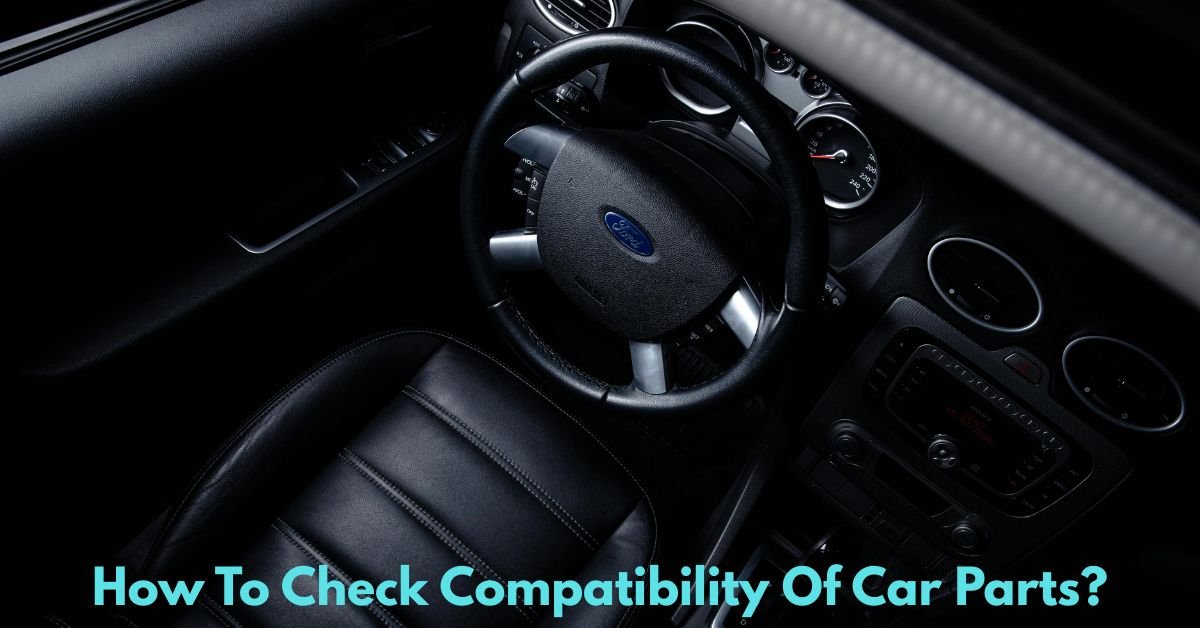When it comes to maintaining or upgrading your vehicle, one of the most crucial factors to consider is whether the car parts you’re purchasing are compatible with your car. Choosing incompatible parts can lead to costly repairs, performance issues, or even dangerous driving conditions. Fortunately, there are several ways you can ensure the parts you select will fit your car perfectly. In this post, we’ll explore how to check the compatibility of car parts, so you can make the right decisions for your vehicle.
How to Check Compatibility of Car Parts
1. Understand Your Car’s Make, Model, and Year
Before you start looking for replacement or upgrade parts, it’s essential to know your vehicle’s exact make, model, and year. Car manufacturers often release different versions or trims of the same model in various years, and not all parts will be interchangeable. For example, a 2015 Toyota Camry may have different components than a 2017 Camry, even though they share the same name.
Most car parts have a unique part number that corresponds to specific makes, models, and production years. If you’re unsure of the exact specifications, check your owner’s manual or consult the car’s manufacturer website. You can also use the Vehicle Identification Number (VIN) to find more detailed information about your car.
2. Use Part Numbers
When searching for car parts, always look for the part number. A part number is a unique identifier assigned to each component that can be used to determine compatibility. If you’re replacing a part, it’s best to use the exact part number as the one in your car. If you’re upgrading or choosing a non-OEM (original equipment manufacturer) part, ensure that the new part number is a known match for your vehicle.
OEM parts are typically designed specifically for your vehicle, while aftermarket parts might offer more variety but can sometimes vary in quality or fit. Ensure that the aftermarket part you’re considering lists compatibility with your make, model, and year.
3. Consult with Professionals
If you’re not sure whether a part is compatible, it can be a good idea to consult with professionals, such as auto mechanics or specialists at car parts stores. They have the expertise to advise you on which parts will work with your vehicle and can recommend trusted brands or sources for purchasing parts. Additionally, if you’re purchasing parts online, it’s often helpful to reach out to the seller or manufacturer directly to confirm compatibility before making the purchase.
Must Read: How To Burp A Car Radiator?

4. Use Online Compatibility Tools
There are many online resources available that allow you to check the compatibility of car parts. Many auto parts retailers and manufacturers offer “vehicle finders” or compatibility tools on their websites. By entering your car’s make, model, and year, you can filter parts that are designed specifically for your vehicle.
Websites like AutoZone, Rock Auto, and Amazon have robust search features that make it easy to narrow down parts that fit your car. For example, when purchasing brake pads, you’ll be able to filter the results based on your car’s specific year and model.
5. Research the Brand and Reviews
If you’re considering aftermarket parts, it’s essential to research the brand and read customer reviews. Brands that specialize in certain types of parts (e.g., brakes, suspension, or exhaust) will often provide more accurate information about their parts’ compatibility with various makes and models.
Reading reviews from other car owners can give you a better understanding of the product’s performance and whether it’s a suitable fit for your vehicle. Pay close attention to any issues other users have experienced with fitment or installation, as this can give you important clues about the part’s true compatibility.
6. Check the Specifications
Every car part has its own set of specifications that can help you determine compatibility. For example, when looking for a new alternator, check the voltage and amperage specifications to ensure they match those required by your vehicle. Make sure the tire size, load rating, and speed rating match the specifications of your car when purchasing products like tires.
The specifications can usually be found on the part itself or in the product description when shopping online. If you’re working with a professional mechanic, they can help you double-check these numbers to avoid mistakes.
7. Consider the Purpose of the Part
Not every auto component is made with performance in mind. For instance, some parts may be intended for aesthetic purposes, like body kits or decorative trim, while others focus on improving the car’s overall performance or fuel efficiency. Depending on your goals—whether you’re looking to repair a broken component or upgrade your vehicle for enhanced driving—you need to ensure that the part you’re considering matches your needs.
If you’re upgrading for performance, such as installing a cold air intake or performance exhaust system, make sure the parts are compatible with the engine specifications, emission regulations, and the vehicle’s overall setup.
8. Test Fit Before Installation
Finally, if possible, always test fit the part before fully installing it. This allows you to check for any obvious misalignments or issues. If you’re installing a part yourself, this is especially important as it can save you the hassle of having to remove and exchange parts if something doesn’t fit properly.

Conclusion
Checking the compatibility of car parts is an essential step in vehicle maintenance and upgrading. By understanding your car’s specifications, using part numbers, consulting professionals, and utilizing online tools, you can ensure that the parts you choose will work seamlessly with your vehicle. Taking the time to check compatibility not only saves you time and money but also ensures that your car runs smoothly and safely.
Remember, even small errors in part selection can lead to significant issues down the road, so always do your research before making a purchase. Happy driving!
